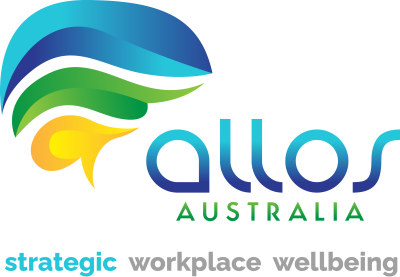With frequent talk of “work-life-balance” encouraging more personal time to improve mental health, it is easy to forget the ‘work’ part of the equation. Mental health does not completely shift according to each context or setting we step into. Rather, mental health is fluid, with effects from one setting flowing through and impacting all others. With the average full-time employee spending at least 50% of their waking hours at work (not including commuting or the stress of tasks following you home) it is easy to see why a mentally healthy workplace is integral to overall mental health, wellbeing, and quality of life.
So we know a mentally healthy workplace is essential, but what do mentally healthy workplaces do differently?
Strengths-based Management Makes the Difference
As many of us know all too well, a boss or manager that can only seem to find the negative in everything you do can quickly impact your workplace experience and even your health! While performance feedback is an important aspect of almost all workplaces, the managerial approach can play a much larger role than it is typically given credit for.
Strengths-based leaders are approachable and lead by example, highlighting where employees are doing well. The constructive feedback presented by strengths-based management often takes on a coaching approach, presenting feedback as goals for improvement whilst also acknowledging employee effort and achievement (more on that here!). This approach is more likely to lead to employee motivation and feelings of validation rather than defensiveness which can easily occur if not handled appropriately. Better still, effective leadership has been linked to increased mood, trust, and resilience amongst employees whilst reducing absenteeism and workplace conflict.
Learn more about why your Management Team Needs a Strengths-Based Approach here.
Create a Community Mindset
An interconnected workplace community where members support and empower one another boasts surefire benefits. Positive social interactions paired with a sense of belonging hold many benefits for employee mental health and the overall atmosphere of the workplace. Better yet, a positive workplace atmosphere again feeds positively into worker mental health. Now that’s a positive feedback cycle we can get behind!
Positive friendships between employees and leaders within workplaces has been shown to increase overall productivity where workers support one another and are happy to help the business succeed. A good place to start developing a healthy workplace community is through employee involvement in planning and evaluation where possible. Active employee engagement in workplace discussion and planning has been shown to reduce cynicism and employee turnover.
Learn more about why your organisation needs a community mindset
Build a Supportive Organisational Structure
Organisational policy, processes and programmes are the essential foundations to any mentally healthy workplace. Many well-intentioned efforts to improve mental health are more likely to dissipate or struggle to gain traction at all if these structural foundations are absent.
Workplaces with targeted principles and policies around mental health and associated support are linked to increased productivity. Clear and consistent stances on workplace bullying and harassment along with supported, stigma-free return-to-work processes, accessible EAP, and mental health education programmes are just a few examples of supportive organisational structure (though there is much more to this picture.)
Learn more about how your organisation can benefit by supporting staff
Empower Employees through Education
Great training is a non-negotiable in mentally healthy workplaces. Appropriate and up-to-date training is always important across all levels of an organisation, managers and general workers alike.
More specifically, workplace training and education targeting mental health awareness and support is especially helpful. This training can broaden the perspectives of those receiving it and encourage increased empathy, understanding and sensitivity within the workplace.
Exploit the Powerful Invisible Forces of Ethos and Environment
The unwritten rules and expectations within a workplace that make up its ethos, environment, and culture can be either an uplifting force or an insidious disease. Mentally healthy workplaces foster positive communication and relationships with rules and expectations designed to empower and include employees.
Positive workplace ethos and environment is linked to higher job satisfaction and commitment to see the organisation succeed. A mentally healthy ethos and environment should encourage respect and teamwork across the workplace to benefit employees and the business alike. Just as importantly, mentally healthy workplaces do not engage in blame or shame culture when errors or conflicts do occur. Instead, they adopt constructive strategies more beneficial for individuals and the workplace as a whole.
These 5 ingredients combined allow organisations and the individuals working within them to flourish. A mentally healthy workplace allows its employees to spend their day in a psychologically protective environment rather than one which may contribute to mental health issues. If your workplace is in need of a guide or a boost in the right direction, our Employee Assistance Program (EAP) is a great option. Allos Australia’s proactive EAP encourages a ‘prevention is better than cure’ framework for much deeper workplace mental health protection, and maintenance.

